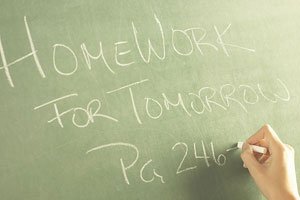It was announced this week in a press release that the State Superintendent of Public Instruction, Tom Torlakson, has made recommendations to the Governor and Legislature to shift the focus of Standardized Testing and Reporting (STAR) testing in California to require students to think critically, solve problems and show a greater depth of knowledge.
To this end, the standardized testing system that’s been in place since 1998 is about to get a major overhaul, meaning California students in the 2013-2014 school year will undergo a more comprehensive learning assessment rather than multiple choice and fill-in-the-bubbles, “which simply cannot do the job anymore,” according to Torlakson.
“It’s time for California to move forward with assessments that measure the real-world skills our students need to be ready for a career and for college,” he said.
Each spring, California students in grades two through 11 take the STAR test to see how well schools and students are performing in math, reading, writing, science and history.
All students, including English Language Learners and students in special education programs, must participate in the STAR program.
President Paul Winslow of the Gilroy Teachers Association predicts a “five year shakedown” for all these changes before California can know how, and if the new test system is working.
“The smaller pilot programs will be taking place soon, but the overall change won’t be until the 2014-2015 school year,” Winslow explained. “The tests will involve each student sitting at a computer and I am not sure how so many students logging in at once will work. California hasn’t had a stable online presence for things like this so far, so I am not sure what it will eventually look like.”
Winslow also added clarity to what the new assessments might look like.
For example, instead of multiple choice fill-in-the-bubble answers, some questions will ask students to watch a brief video and answer questions about it, Winslow explained. Some questions might require an essay, and some will require students to answer the questions, but then also write a supportive paragraph that will show a deep understanding of the subject.
“Teachers haven’t been part of the new assessments yet,” Winslow added. “They know they are coming, but none of us know what they will be like for the students or for them.”
Torlakson’s recommendations to align the state’s assessment system with the new standards mark a key milestone in implementing the Common Core Standards.
The Common Core State Standards (CCSS) are the result of 45 states adopting the same standards for English and math. Teachers, parents and education experts developed the CCSS in 2010 to make sure the same standards are taught in every state. This uniformity helps all students get a good education, even if they change schools or move to a different state.
“I extend my gratitude to the many teachers, school administrators, parents, students, business leaders, and higher education faculty for their expertise and experience that contributed to the formation of these recommendations,” Torlakson said.














